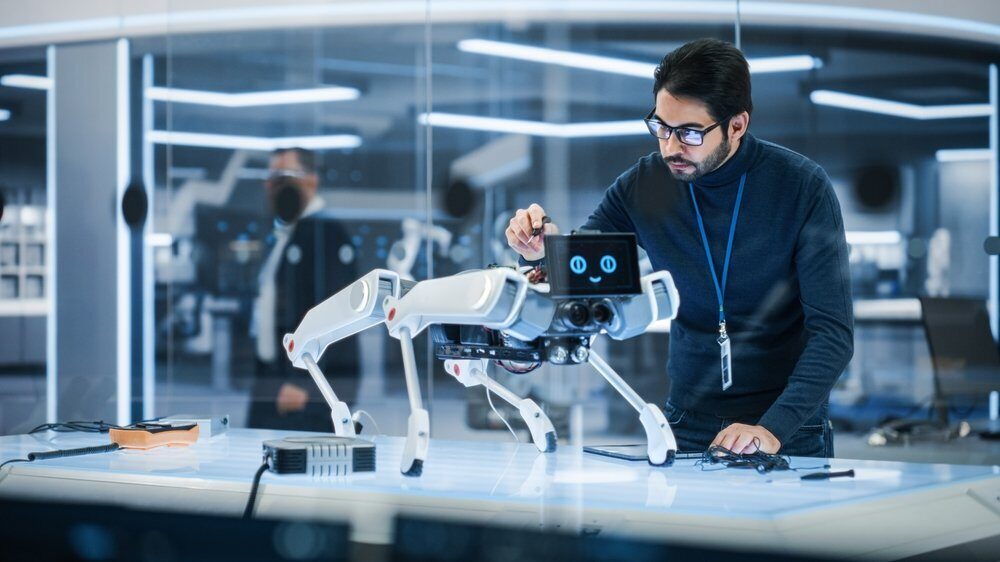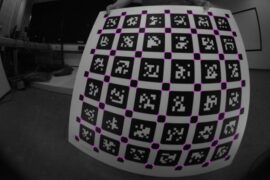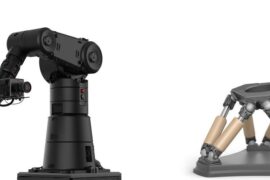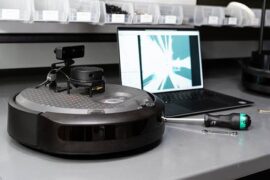Camera Calibration
Extrinsic and Intrinsic Camera Calibration. We use the right camera model, calibration pattern and algorithms for your specific use case.
Read Camera CalibrationPosted on 23 January 2023

This article is part of a mini-series on real-time robotics. Be sure to also checkout Part 1: Before You Start and Part 3: The Extended Kalman Filter !

In this Part 2 of our mini series, we'll explore the Kalman Filter and if it can be used to enhance sensor quality and build real-time robotics applications.
In Part 1, we explored ways to reduce jitter, but that does not eliminate slip, drift and noise in a robotic control system. It only allows us to start working on the real-time data readings. There’s many ways to reduce these three sources of error, but in this article, we’ll focus on one very popular filter: The Kalman filter.
The Kalman filter is a mathematical algorithm that uses a combination of sensor measurements and a model of the robot's movement to estimate the true values of the robot's position and orientation. The Kalman filter can help to reduce the effects of slip, drift and noise by filtering out erroneous sensor readings and estimating the true values based on a combination of past measurements and a model of the robot's movement.

The Kalman Filter is a real-time optimal estimation algorithm that uses a series of measurements to estimate the state of a system. It was developed in the 1960s by Rudolf Kalman and is used in a wide range of applications, from robotics to finance. The Kalman Filter works by combining multiple measurements together to generate an estimate that is more accurate than any single measurement.
The Kalman Filter works by taking the current state of the system and predicting the state of the system at the next time step. This prediction is based on the measurements taken at the current time step. The Kalman Filter then compares the predicted state with the actual measurements taken at the next time step and uses this difference to refine its prediction. This process is repeated until the Kalman Filter converges on a state that is close to the actual state of the system.


To use a Kalman filter, you will need to have a system with the following properties:
If your system meets these requirements, you should be able to use a Kalman filter to estimate the state of the system and improve the accuracy of your estimates over time.
Now wait…did it say ‘linear system’ ? As in, a robot that moves on a rail back and forth ? No turning ??
Well, not without modifications... The original Kalman filter works pretty well to measure simple linear systems, like a temperature reading, current reading or light intensity. But we can’t use it to measure the position and velocity of a robot, because these are unfortunately almost never linear… your robot can turn, can’t it ?
There are many other real-time filters that can be used instead to measure the position and velocity of a robot accurately, such as the extended Kalman filter, the unscented Kalman filter, and the particle filter.
In Part 3, we’ll dive a little bit deeper into the Extended Kalman Filter, also known as the ‘EKF’.
Although popular by name, the original Kalman Filter will probably not be part of your next robotics project. We will finish this mini series in the third and last part, where we dive into the rabbit hole of the Extended Kalman Filter and conclude with some popular libraries to implement one.
Continue to Part 3
Extrinsic and Intrinsic Camera Calibration. We use the right camera model, calibration pattern and algorithms for your specific use case.
Read Camera Calibration
Intermodalics has been at the core development of the Kinematics and Dynamics Library (KDL).
Read Inverse and Forward Kinematics
We are a ROS-native company, standardising all our tooling on the ROS ecosystem. We offer ROS Consulting and best practices for standard ROS paradigms and insights into ROS design decisions its shortcomings.
Read Robot Operating System ROS